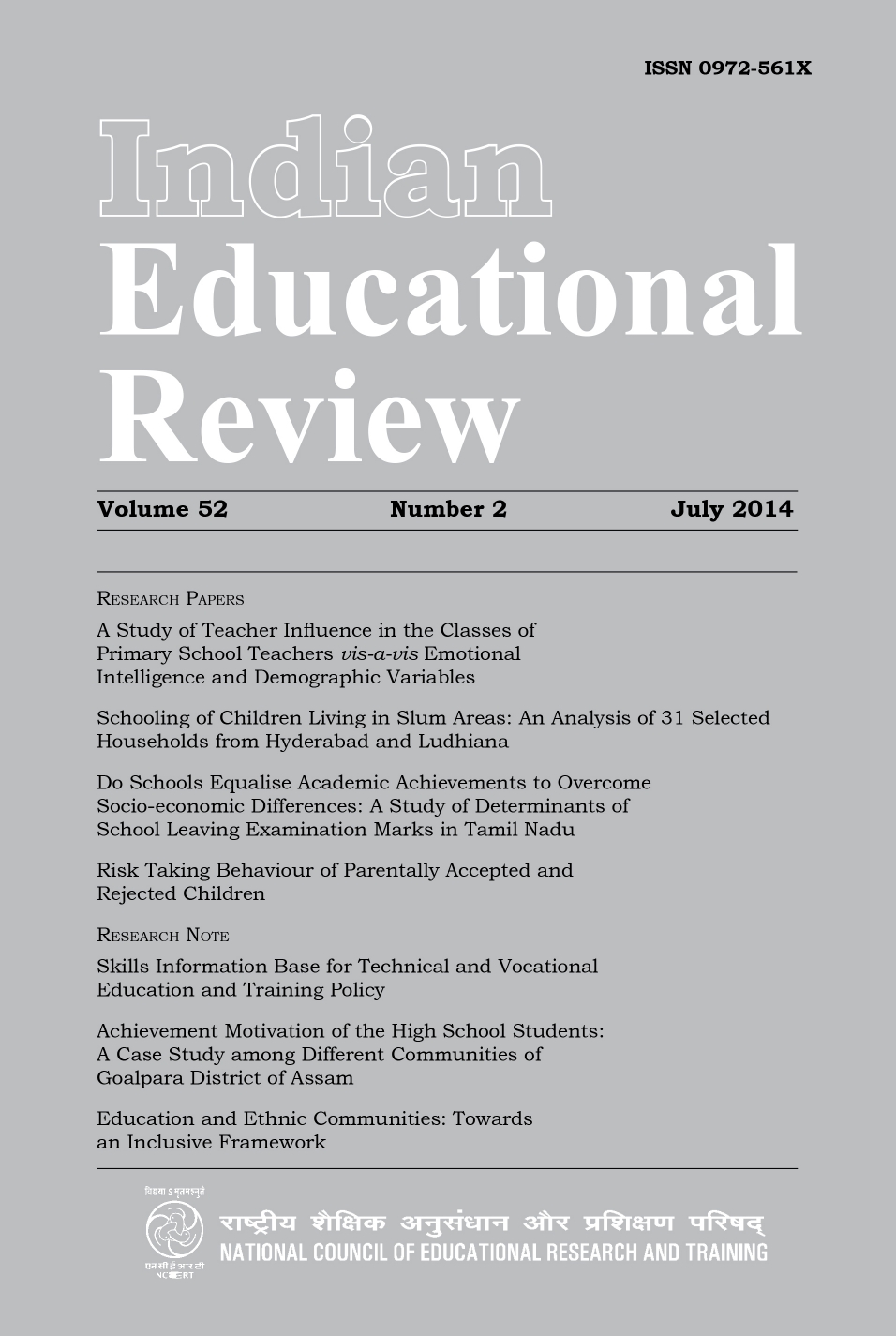Schooling of Children Living in Slum Areas: An Analysis of Selected Households from Hyderabad and Ludhiana
Published 2024-12-31
Keywords
- Elementary Education,
- Socio-Economic
How to Cite
Abstract
Ensuring equality in education is the foundation to develop just, fair and egalitarian society. In the modern democratic societies, education is the only mechanism to transcend the barriers of social exclusion and prejudices. In fact, it is education that enables the development of people’s capabilities, access to choices and exercise of freedom in information driven age. Thus addressing lack of access to and inequality in education is central to achieve social justice and by extension broader societal development. Access to education by various social, economic and other vulnerable groups needs to be continually examined to identify areas of concern. Notwithstanding high aggregates in urban areas, slums continue to be deficient in public provision of education that adversely impacts the participation. It is in this context the present paper makes an attempt to map the educational scenario of the children living in slum areas of Hyderabad and Ludhiana and analyses the ground reality in determining how much the efforts of the State have been able to reach these disadvantaged groups. It seeks to present an overview of the status of education of children of 6-17 years of age living in select slum areas. Though slums are generally deficient in the provision of public services, and households usually have low income but they are not uniform across the country. The present study contrasts the participation of children in slums located in two different cities viz., Hyderabad and Ludhiana. These two cities are quite different. The former is a modern hi-tech city with varied sources for employment and living and the later principally manufacturing city focused on hosiery. Households in slums of Hyderabad have varied occupations, higher level of education and income. Households in slums of Ludhiana are migrants primarily from Bihar and Uttar Pradesh dependent on manufacturing and construction activities with low education and incomes. The present paper examines how this contrast manifests in the participation of children in education. The results reveal that the participation of children from slums in Hyderabad is high, more children attend private schools, study in English medium. In contrast participation of children from slums of Ludhiana in education is very low, seldom found in private schools and have to study in not so familiar language. From these findings the paper hints a few priority areas for policies.

